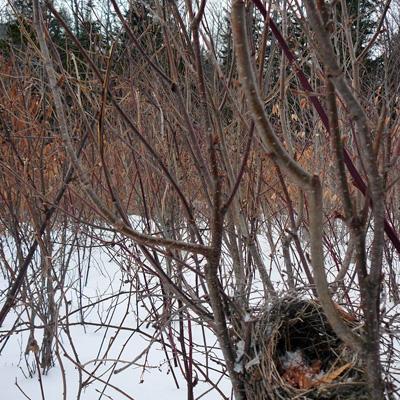Forest Regeneration Differences Between Whole-Tree and Conventional Harvesting Methods in Northern Hardwoods: A Concern for Sustainable Bio-Fuel Production?

Increasingly, we use whole tree harvesting to supply wood chips for biomass energy production. In a typical whole tree harvest, tree trunks are used for traditional products (lumber); branches and fine twigs are sold to a biomass energy plant. Conventional harvesting, in contrast, leaves branches and twigs on site to decompose. There is concern that removal of nutrient-rich branches and twigs might impair forest productivity, leaving a forest that regenerates slower growing, lesser quality trees.
To assess effects of harvest treatment on New England’s northern hardwood forests, NSRC researchers surveyed 29 small clearcuts in central New Hampshire and western Maine. They measured 14 whole-tree harvested and 15 conventionally harvested sites and compared productivity of 10- to 14-year-old regenerating trees. Researchers measured height, diameter, and species of trees greater than two meters in height in study plots. They also measured slope and aspect of each plot and classified soil as well-drained or moderately well-drained. Position and height of uncut edge trees surrounding the patch cuts helped to calculate patch cut size and determine amount of sunlight each plot received during the growing season.
No difference was observed in height, diameter, or calculated biomass of stems greater than two meters in height between harvest treatments. The study found no evidence of productivity decrease 10 to 14 years following whole-tree harvesting in comparison with conventional trunk-only harvests. Results may be limited by extent of moose browsing, restriction of whole tree harvesting to private forest lands, stand development stages, and broader questions of ecological productivity.
